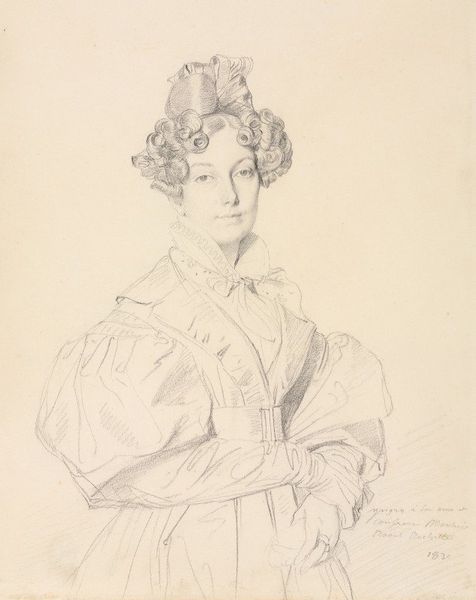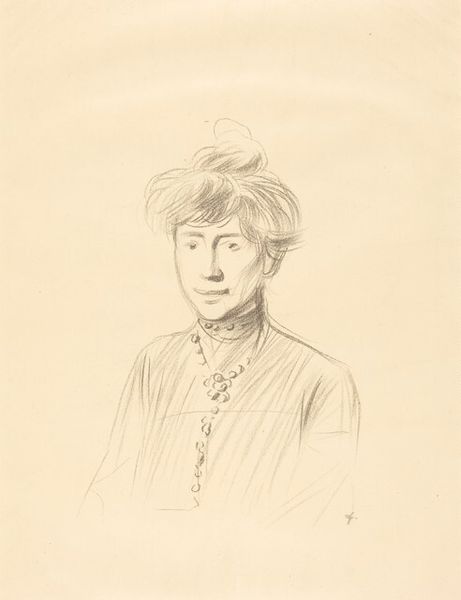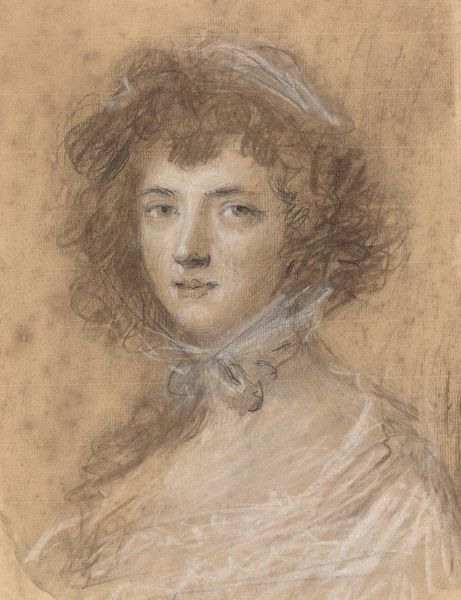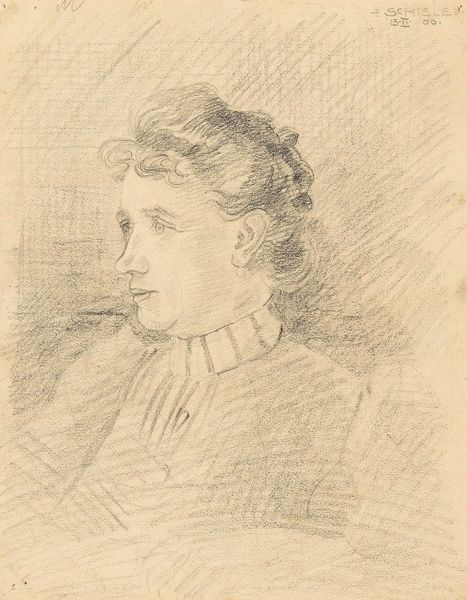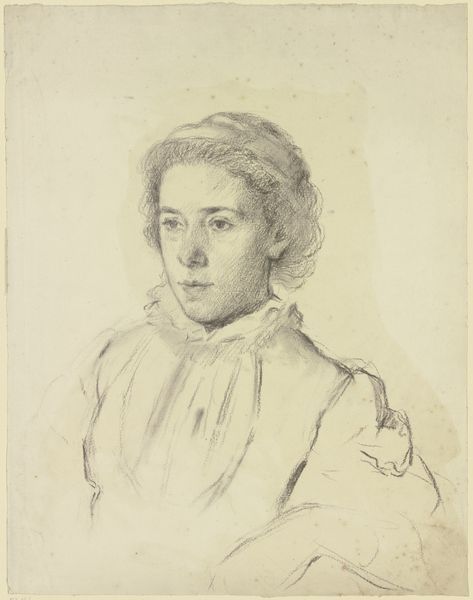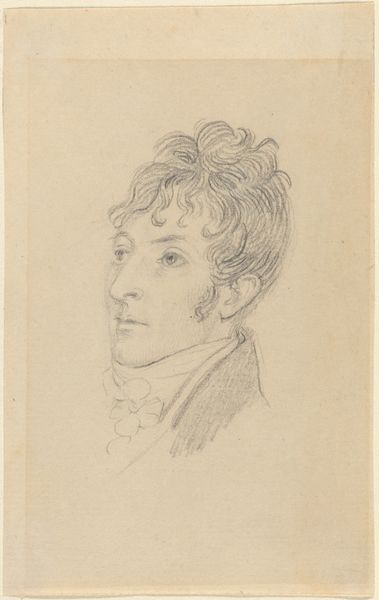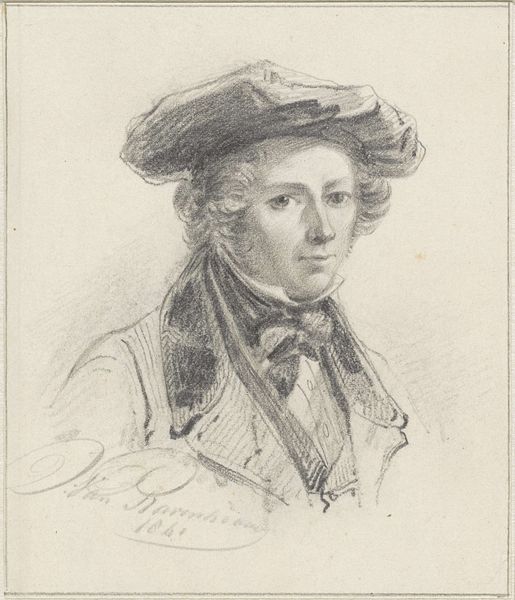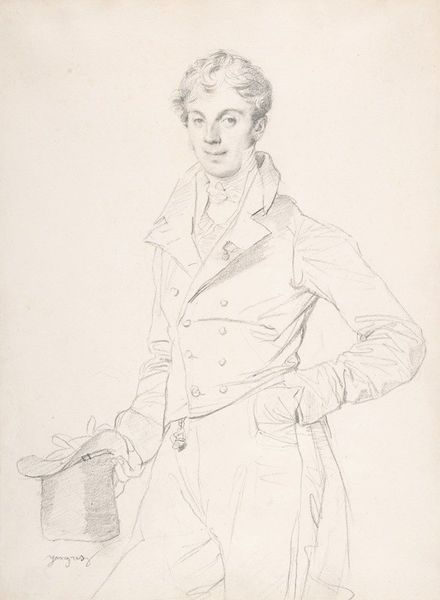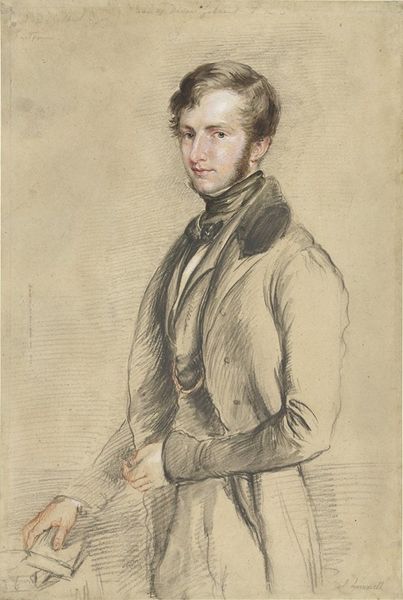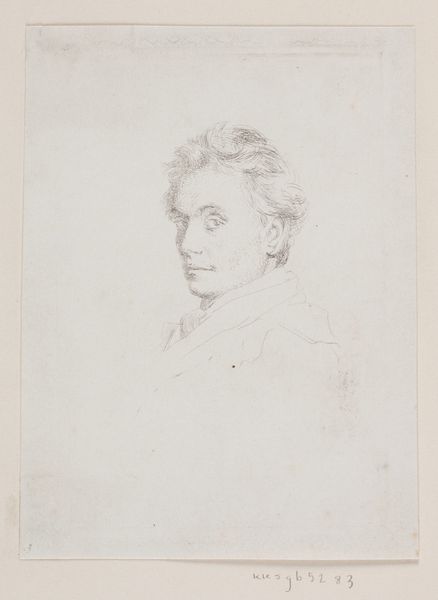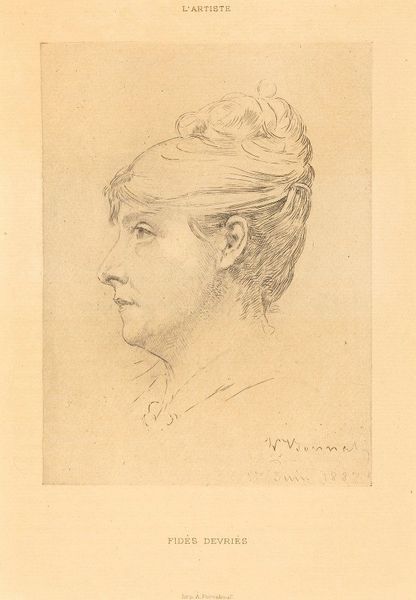
drawing, pencil, graphite
#
portrait
#
drawing
#
pencil sketch
#
pencil drawing
#
romanticism
#
pencil
#
graphite
#
portrait drawing
Copyright: Public Domain: Artvee
Curator: This is John Linnell's portrait of "William Short," rendered in 1820. Look closely at the graphite and pencil work. Editor: The light is what strikes me first, this luminous, ethereal quality. The sketchiness almost feels like a fleeting impression rather than a fixed image. Curator: Linnell's delicate application of graphite and pencil reveals much about the romanticism that fueled portraiture during that time. Consider how paper itself served as a key component, being the ground for expression, and something consumed commercially on a large scale during the early 19th century. Editor: And how the curls seem to crown his head with youthful energy and prosperity! Note also his pale skin, and its almost exaggerated contrast against a darker neckline, creating a distinct impression. One feels he might be presented in terms that emphasize innocence or an unrealized destiny. Curator: His attire reflects a certain societal standing, no doubt, but observe how the soft application of the graphite blurs clear class boundaries somewhat, inviting a focus on more intrinsic aspects. We can interpret societal values through these kinds of consumable goods—paper, pencil—that Linnell, as an artist, transforms through skilled labor. Editor: I’m intrigued by his expression. There's a quiet intensity in his eyes, but softened. The almost fleeting details leave us longing to see further and feel deeper—it seems very telling! Curator: Indeed. When looking closer at these artistic objects from the 1820s we discover that materials and labour played an important part for the artist at work. Editor: It really does evoke a very particular sense of early 19th-century aspiration and vulnerability. Thank you for your time. Curator: You're welcome. Understanding the labour and the artistic production is crucial to appreciating art history, particularly Linnell's romantic vision.
Comments
No comments
Be the first to comment and join the conversation on the ultimate creative platform.
